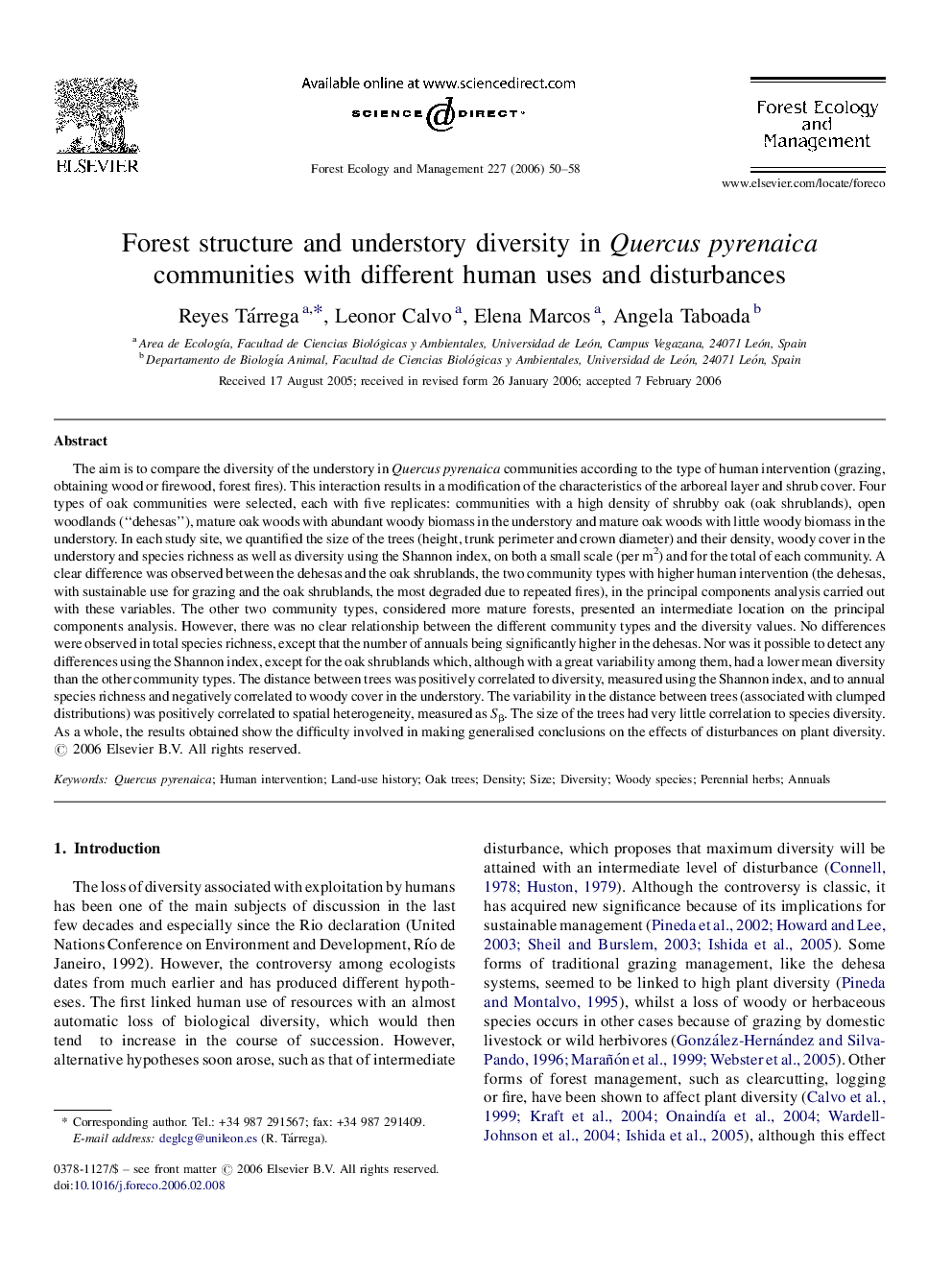| کد مقاله | کد نشریه | سال انتشار | مقاله انگلیسی | نسخه تمام متن |
|---|---|---|---|---|
| 90983 | 159418 | 2006 | 9 صفحه PDF | دانلود رایگان |

The aim is to compare the diversity of the understory in Quercus pyrenaica communities according to the type of human intervention (grazing, obtaining wood or firewood, forest fires). This interaction results in a modification of the characteristics of the arboreal layer and shrub cover. Four types of oak communities were selected, each with five replicates: communities with a high density of shrubby oak (oak shrublands), open woodlands (“dehesas”), mature oak woods with abundant woody biomass in the understory and mature oak woods with little woody biomass in the understory. In each study site, we quantified the size of the trees (height, trunk perimeter and crown diameter) and their density, woody cover in the understory and species richness as well as diversity using the Shannon index, on both a small scale (per m2) and for the total of each community. A clear difference was observed between the dehesas and the oak shrublands, the two community types with higher human intervention (the dehesas, with sustainable use for grazing and the oak shrublands, the most degraded due to repeated fires), in the principal components analysis carried out with these variables. The other two community types, considered more mature forests, presented an intermediate location on the principal components analysis. However, there was no clear relationship between the different community types and the diversity values. No differences were observed in total species richness, except that the number of annuals being significantly higher in the dehesas. Nor was it possible to detect any differences using the Shannon index, except for the oak shrublands which, although with a great variability among them, had a lower mean diversity than the other community types. The distance between trees was positively correlated to diversity, measured using the Shannon index, and to annual species richness and negatively correlated to woody cover in the understory. The variability in the distance between trees (associated with clumped distributions) was positively correlated to spatial heterogeneity, measured as Sβ. The size of the trees had very little correlation to species diversity. As a whole, the results obtained show the difficulty involved in making generalised conclusions on the effects of disturbances on plant diversity.
Journal: Forest Ecology and Management - Volume 227, Issues 1–2, 15 May 2006, Pages 50–58